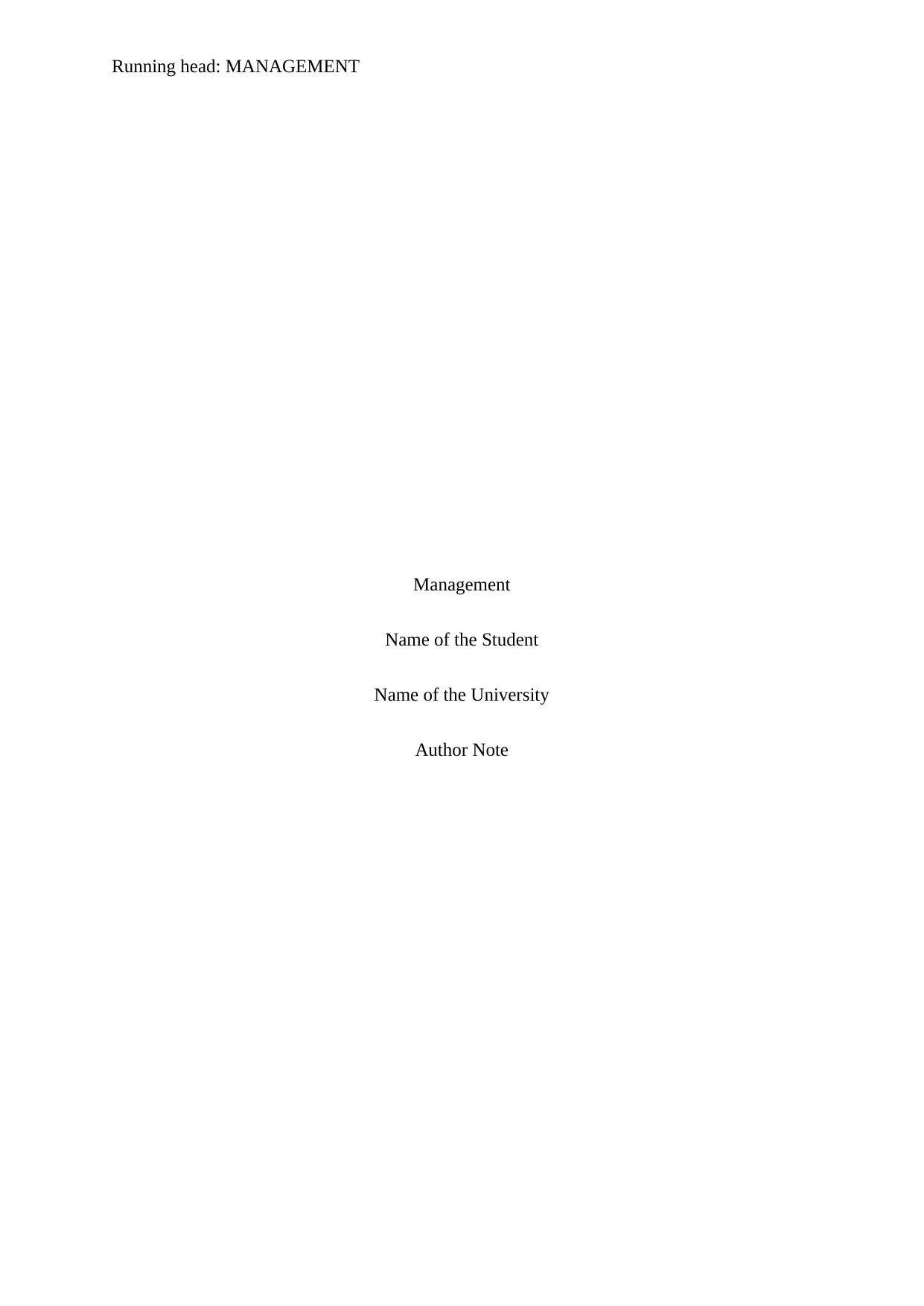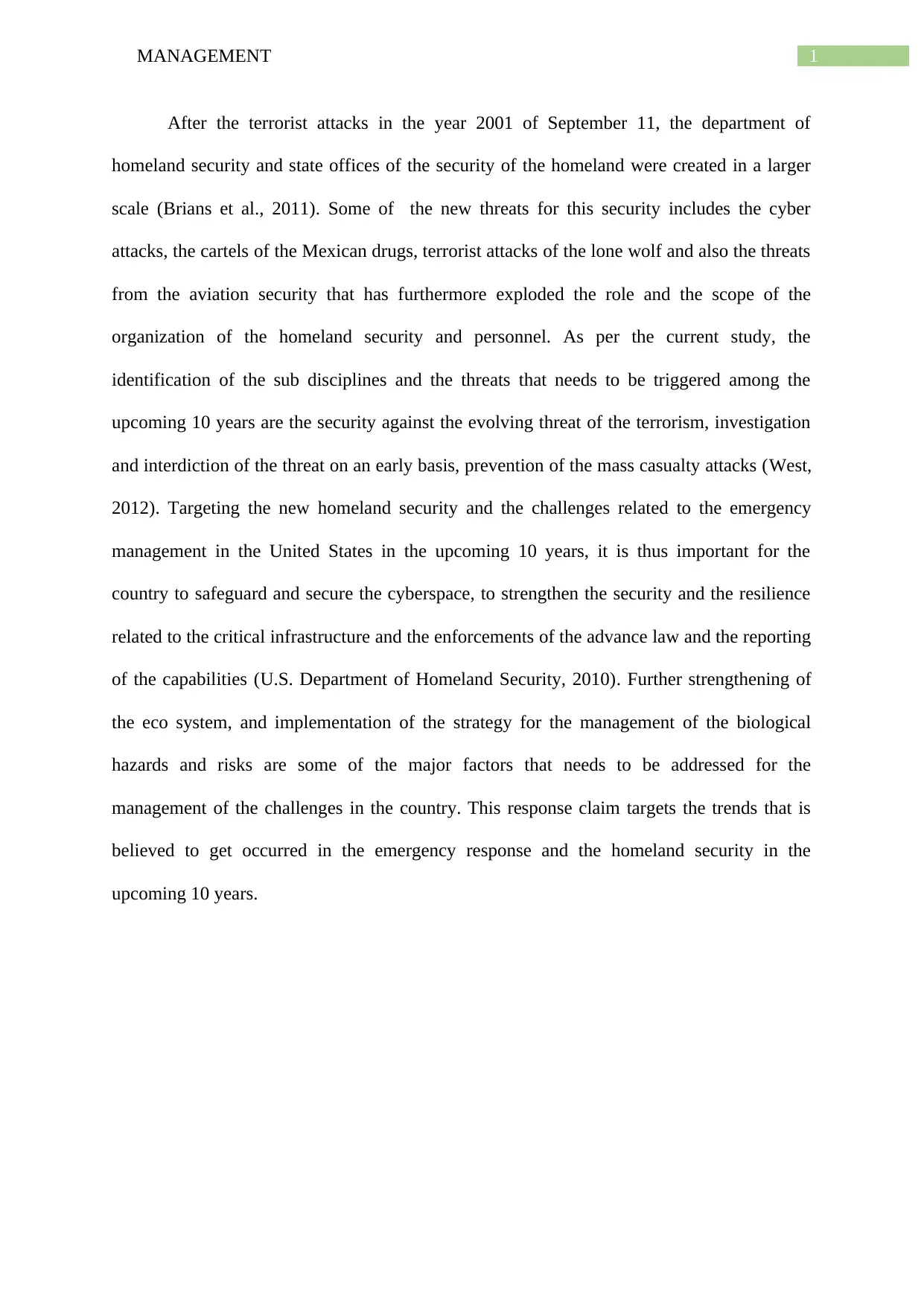HSM 497: Homeland Security and Emergency Management Trends Analysis
VerifiedAdded on 2023/04/23
|3
|415
|274
Discussion Board Post
AI Summary
This discussion post explores the evolving landscape of Homeland Security and Emergency Management, focusing on trends and threats anticipated over the next ten years. The post, referencing the 2014 Quadrennial Homeland Security Review, identifies key changes within the discipline, including the growing significance of cyber-attacks, the continued threat of terrorism, and the challenges posed by Mexican drug cartels and lone-wolf attacks. It also touches upon the role of aviation security and the need to strengthen critical infrastructure. The post highlights the necessity for proactive measures in addressing these evolving threats and the need for advanced law enforcement and reporting capabilities, as well as the implementation of strategies for managing biological hazards and risks. Overall, the analysis underscores the importance of adaptability and preparedness in the field of Homeland Security.
1 out of 3






![[object Object]](/_next/static/media/star-bottom.7253800d.svg)